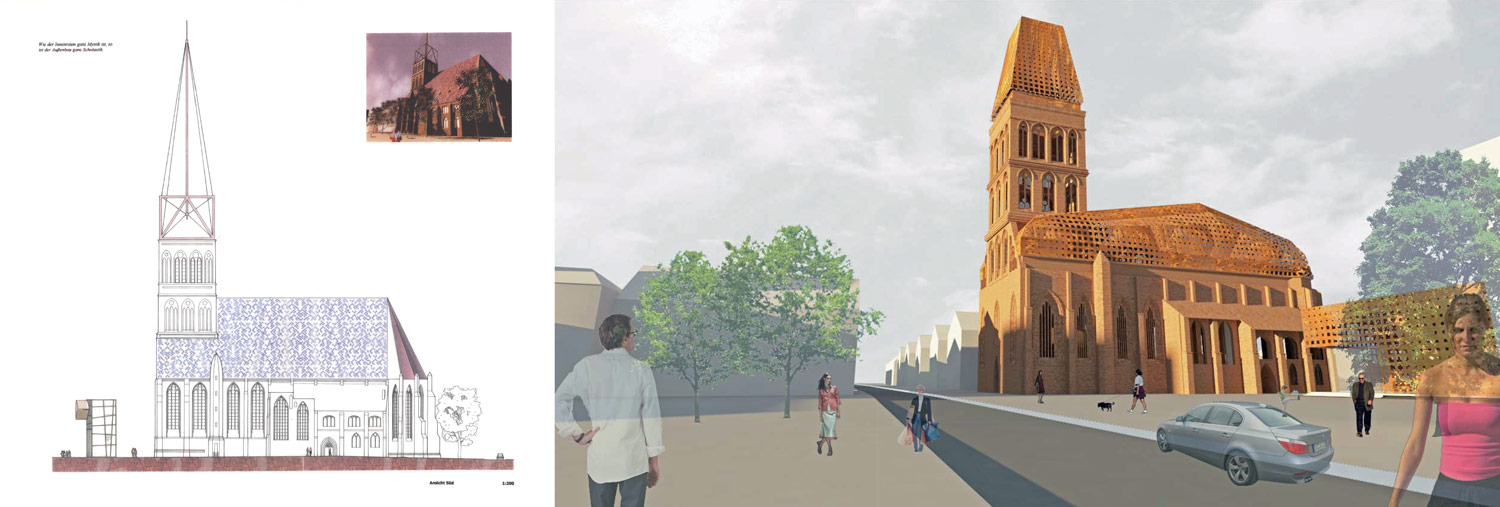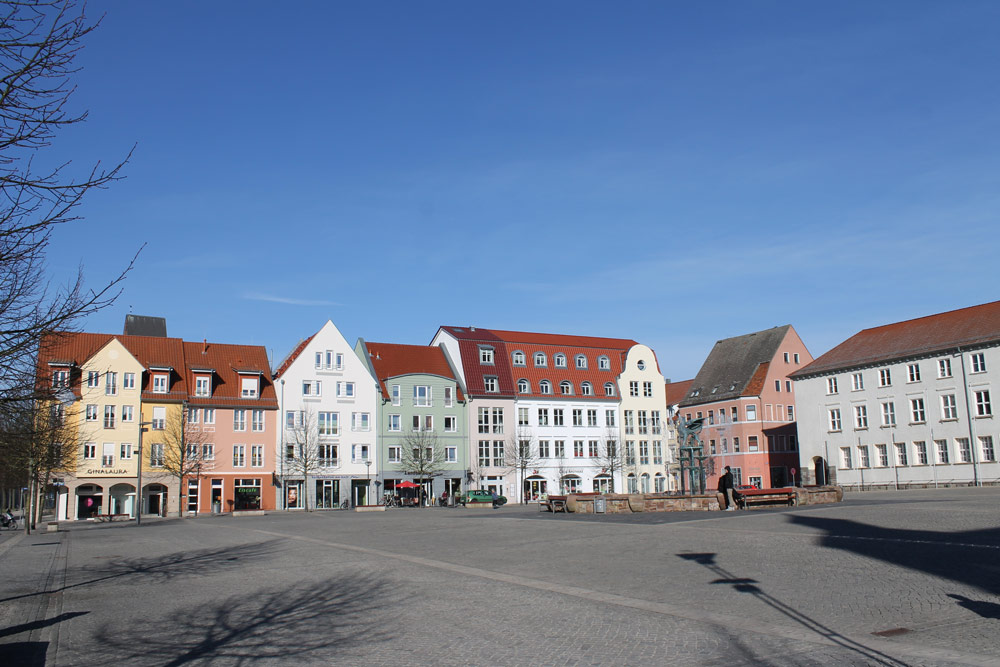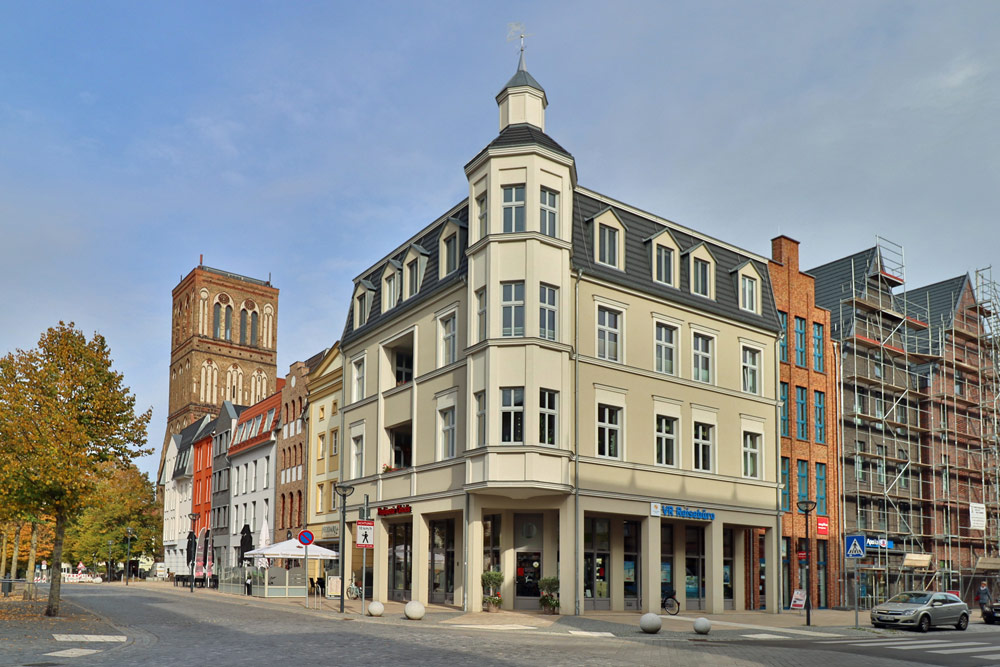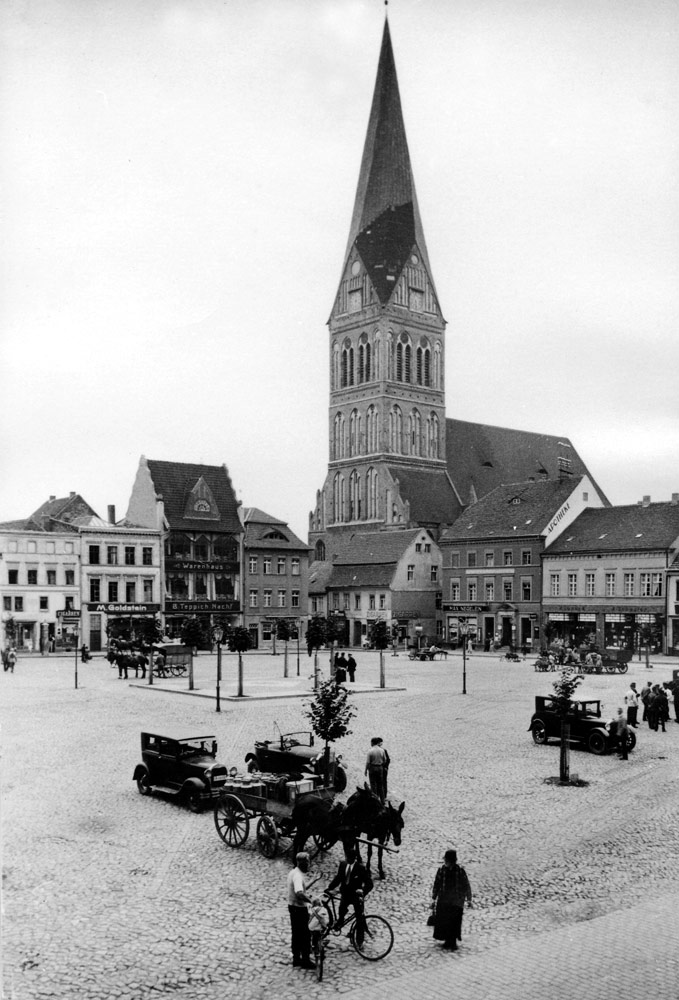
Anklam’s new centre
Like a phoenix rising from the ashes
Anklam became the target of air raids during the Second World War because it was home to the Arado aircraft factory. On 9 October 1943, bombers from the 8th US Air Force attacked the Hanseatic city for the first time. In doing so, the copper shielding of the St. Nicholas church tower was severely damaged and the windows were destroyed by pressure waves coming from the blasts. In April 1945, land warfare reached Anklam. When the Red Army took over the city on the 9th of April, it was shelled by German troops withdrawing over the river Peene. Artillery fire, aerial bombardment and arson sparked an extensive fire with devastating consequences. The St. Nicholas church spire collapsed into the nave and took down the vaults. Except for the surrounding walls, the octagonal pillars, the arcades, the southern chapel extensions, and a few furnishings the church was completely destroyed.

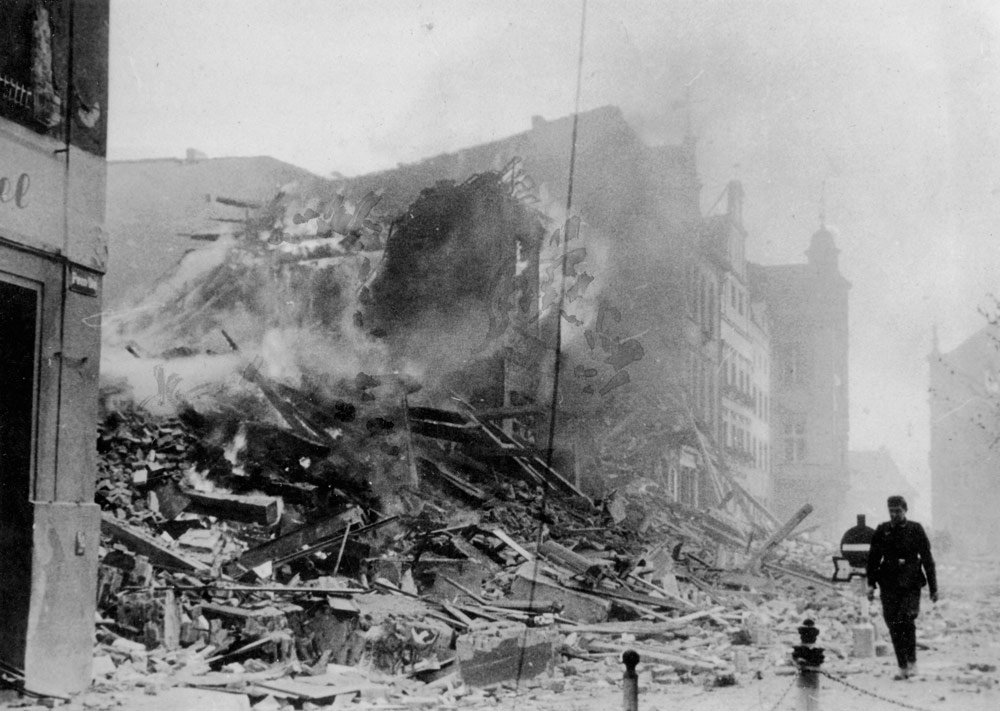
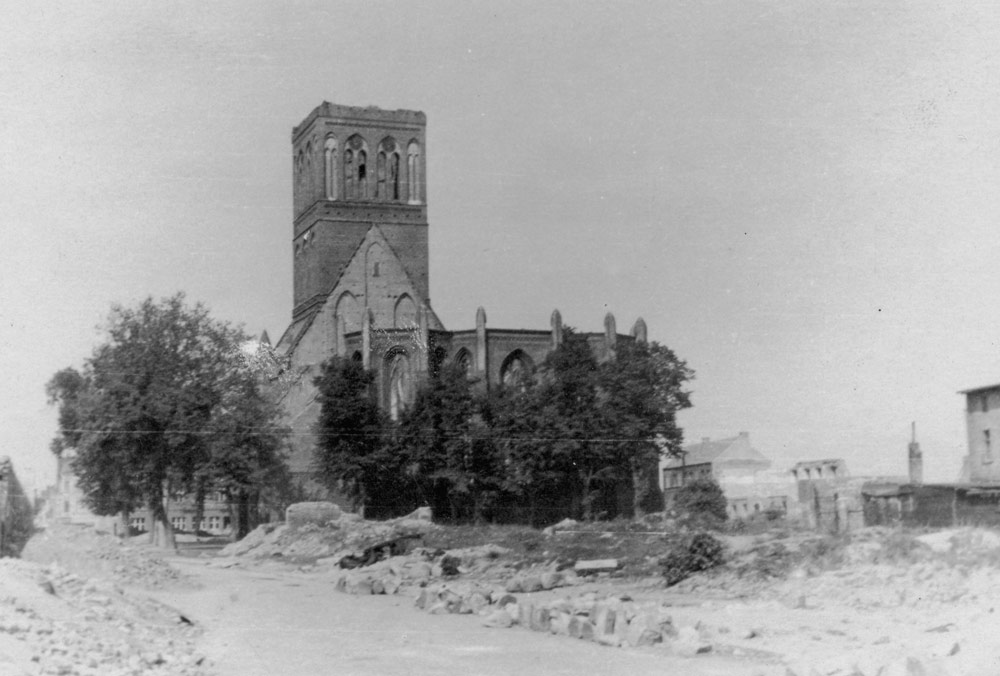
From 1945 to the 1990s, the St. Nicholas Church stood out as a ruin within Anklam’s city centre. Since 1995, the church has been an integral part of widespread plans for urban restoration and renewal. These included the dismantling of the block buildings from the 1970s and subsequently the addition of new buildings in the local historical style on the western and eastern sides of the market square. Through these projects, the future of the St. Nicholas Church also became a topic of local urban planning. In the meantime, local citizen associations had called for its preservation and promoted it. The building was secured, and a church roof truss was erected so that it could be used as an exhibition space. In the future, the spire will also be rebuilt to its original height of 103 metres and the Otto Lilienthal Museum will move into the new IKAREUM, an attractive location at the centre of the Hanseatic and Lilienthal city of Anklam.
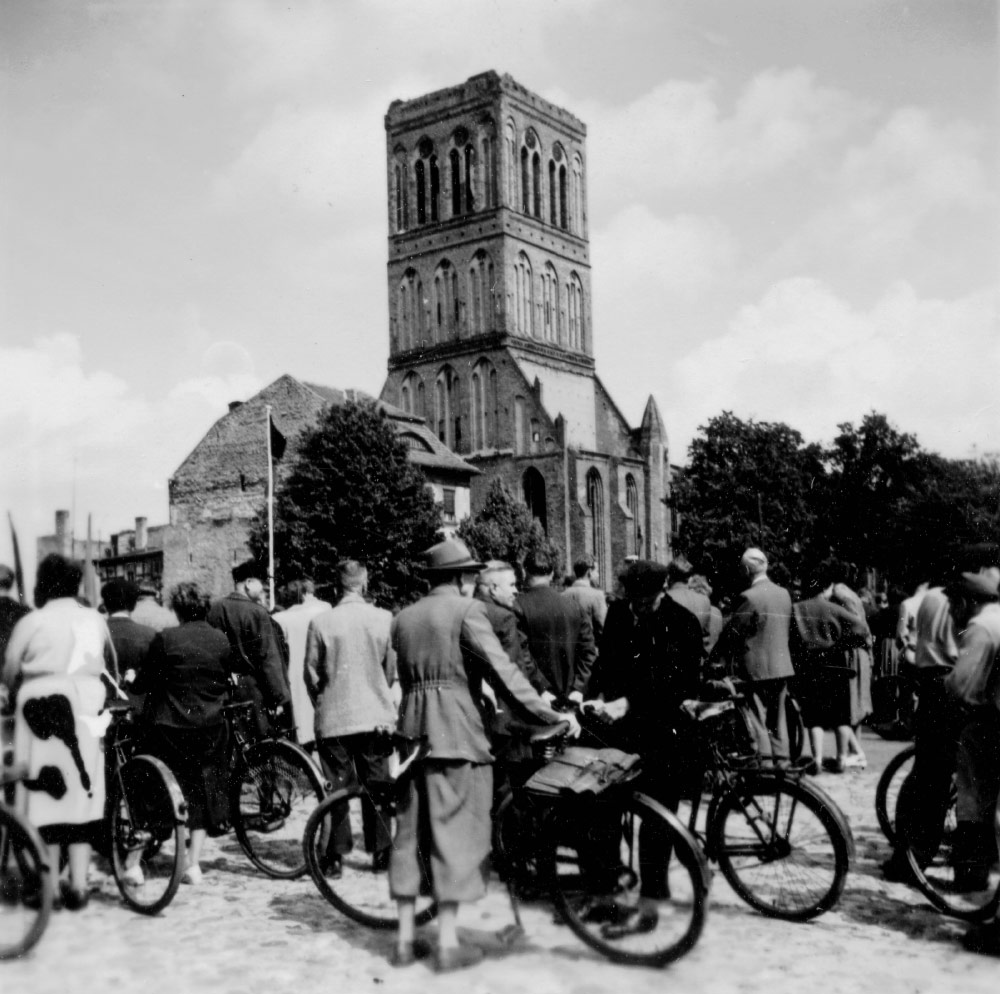
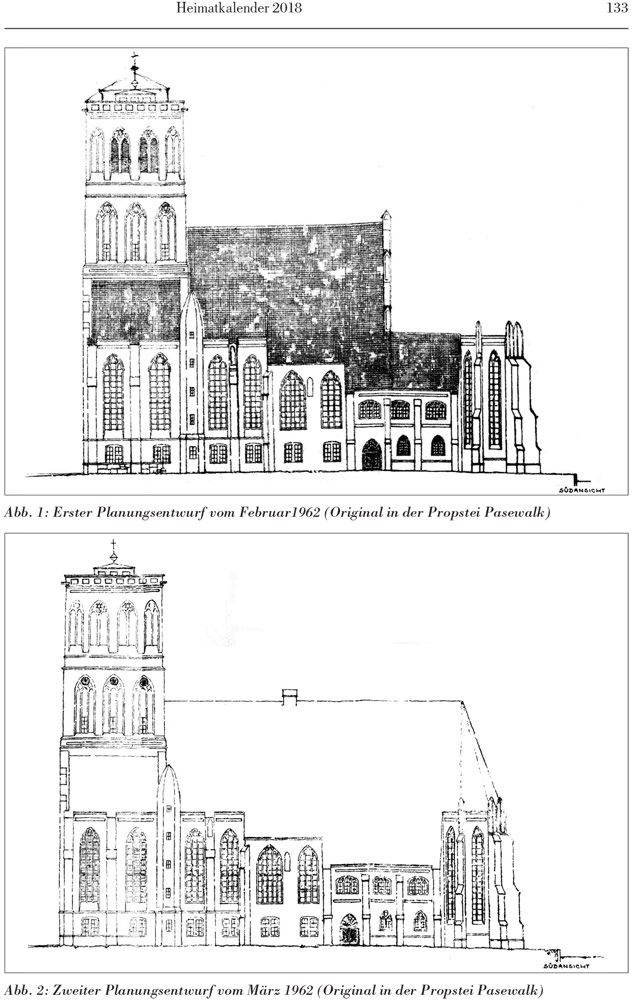
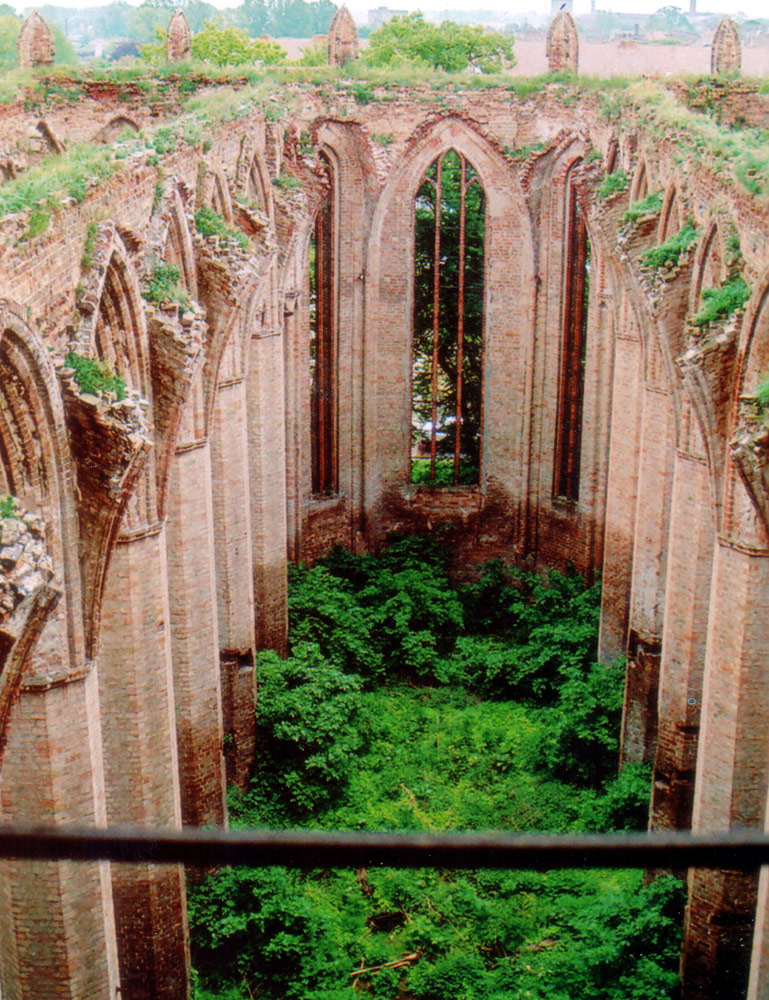
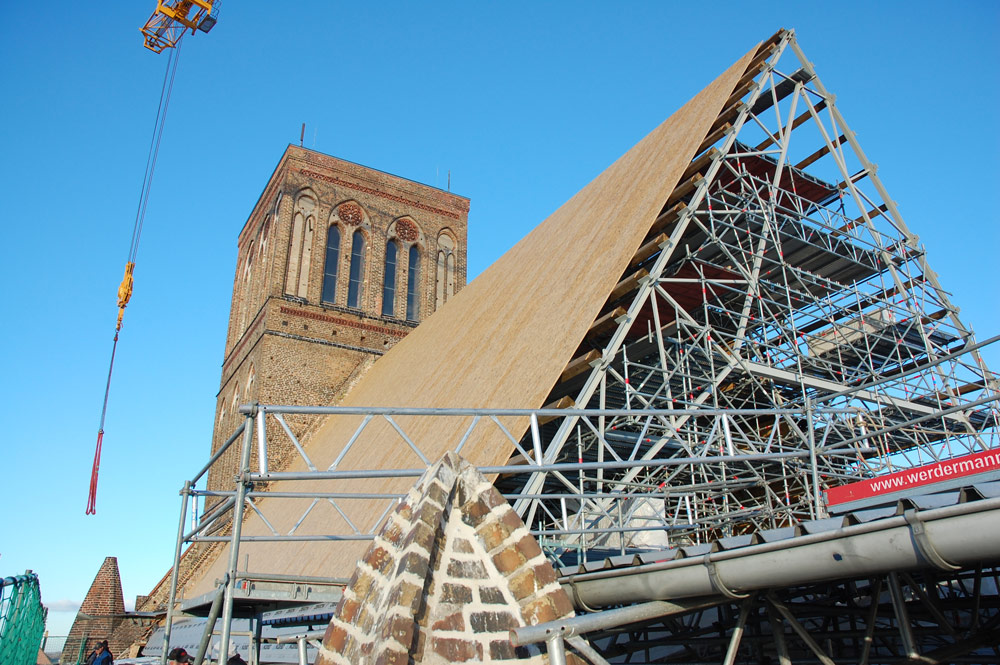
The roof is raised on the St. Nicholas Church, 2010
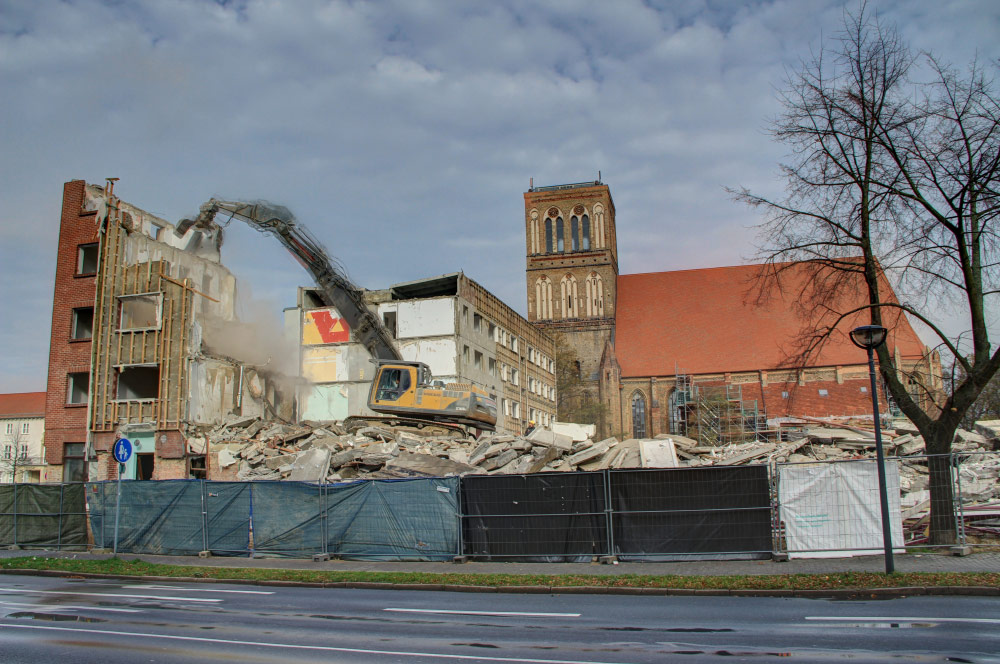
New buildings on the west and east side of the market square, source: BIG Städtebau
(from: Vielfalt im Städtebau, Statusbericht 2018, BMI)
